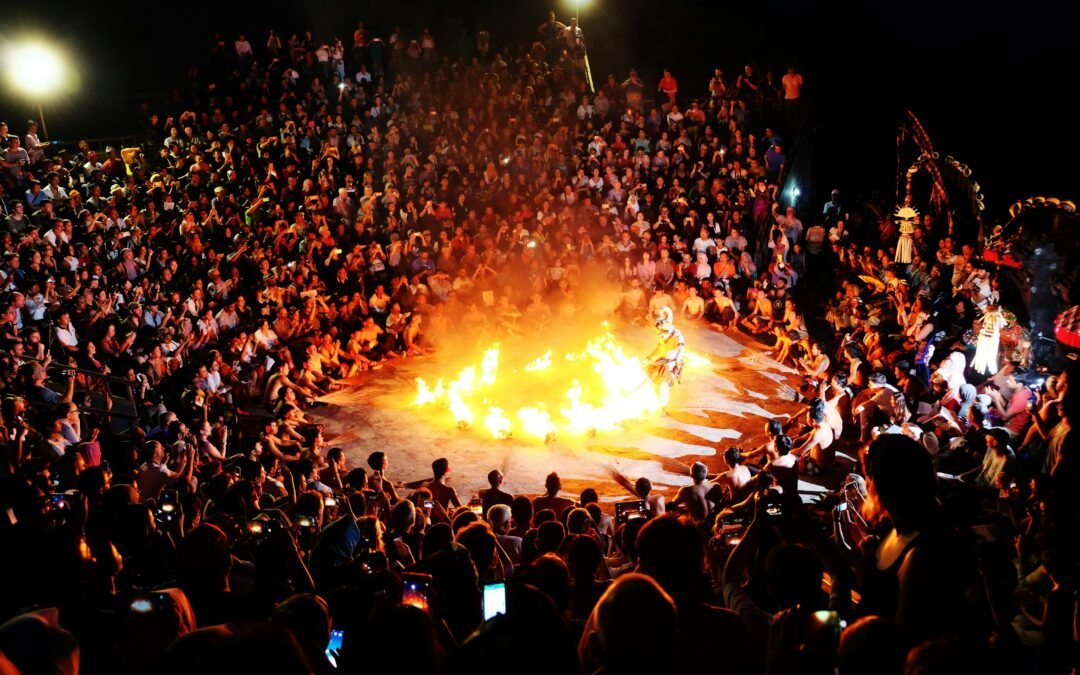Villaku.com – The Kecak Dance is one of Bali, Indonesia’s most famous and interesting traditional dances. Because of its frequent use of fire and stunning theatrical aspects, this dance is commonly referred to as “fire dance”. Kecak Dance is a unique combination of dance, drama, and music. It is notable for its “cak-cak-cak” chants, which are sung rhythmically by dozens of men.
History of Kecak Dance
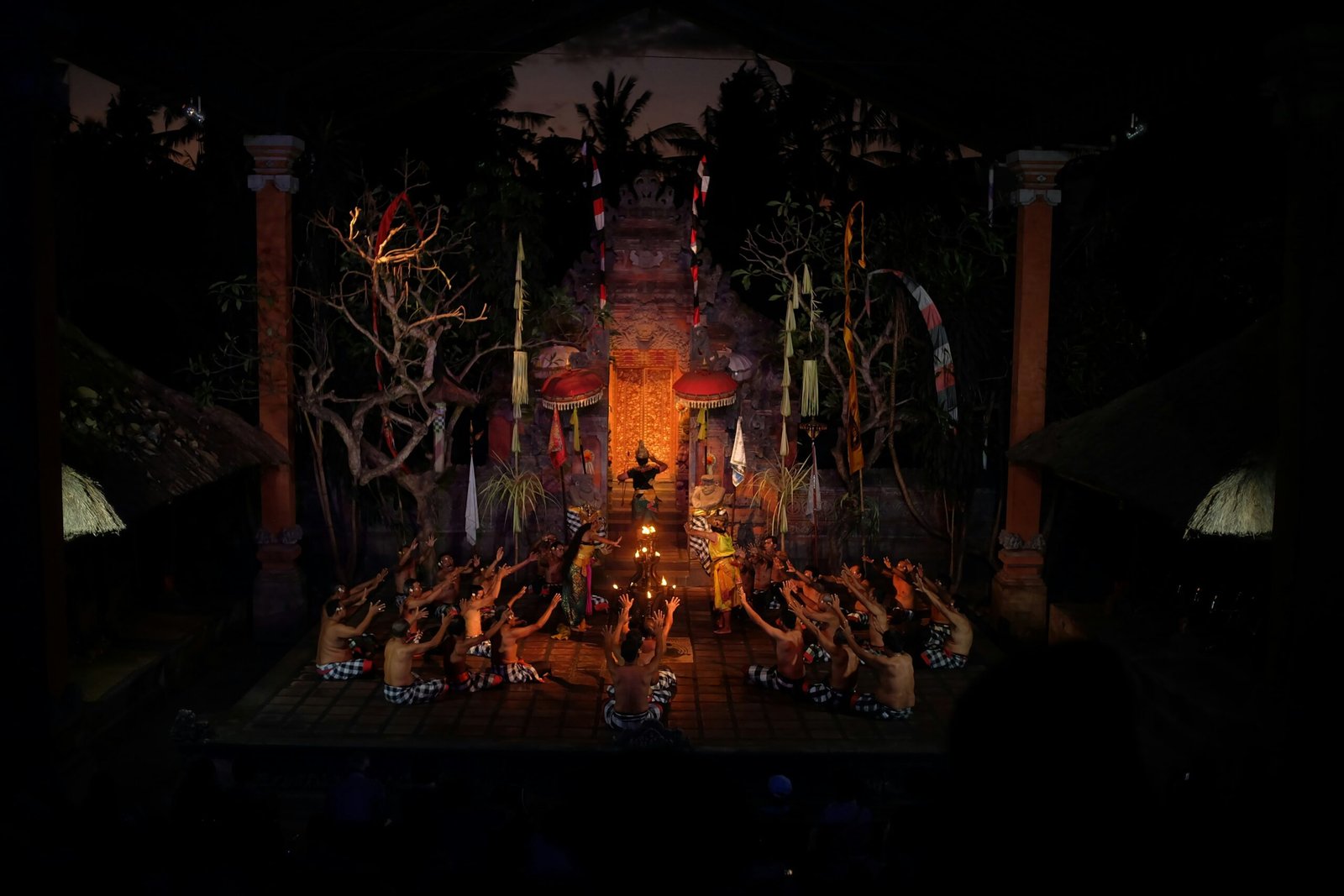
Source : Aminoz Acid via unsplash.com
Origins & Development
The Kecak dance has a long and intricate history that is deeply rooted in Balinese religious and cultural traditions, dating back to the early twentieth century. Wayan Limbak, a Balinese artist, created this theater with the assistance of German painter Walter Spies. This dance is derived from the Balinese ceremonial tradition known as Sanghyang, in which a priest or participant enters a trance to communicate with a god or the spirits of their ancestors.
The Impact of the Sanghyang Ritual
The Sanghyang ritual is an ancient technique that is said to fend off evil spirits and cure ailments. This ritual involves putting a young girl or dancer in a trance and believing she is possessed by a heavenly ghost. While in a trance, the spirit that possesses them will educate the dancer to do the desired actions. Singing and dancing are central to the Sanghyang rite, and the Kecak Dance is built around them.
Adaptation of Ramayana Story
The Kecak Dance has evolved over time, incorporating themes from the epic Ramayana. The Ramayana, which originated in India, is one of the most commonly performed stories in Indonesian performing arts, including dance and wayang. The Kecak Dance depicts Sita’s kidnapping by Ravana, Rama and Hanuman’s effort to save her, and numerous conflicts and intrigues from the Ramayana story in a dramatic manner.
Structure and Performance
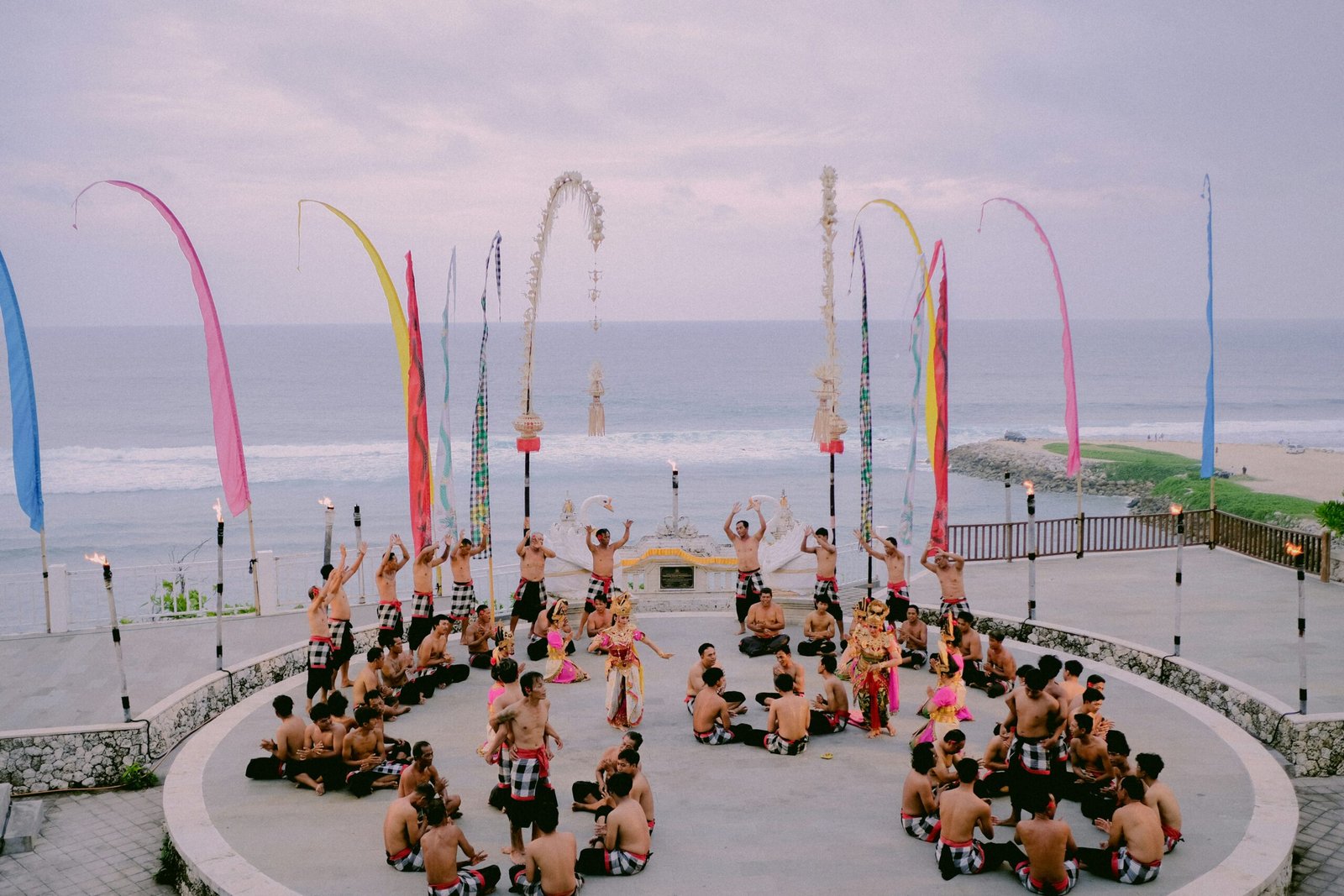
Source : Gede Yoga via unsplash.com
Formation and Choreography
One of the Kecak Dance’s distinguishing features is the dancers’ grouping into a circle. Dozens of guys gathered in a circle, singing “cak-cak-cak” and lifting their hands in the air. They form a circle around the middle of the stage, where key scenes from the Ramayana are performed. This formation embodies the concepts of oneness and harmony, making it both beautiful and spiritual.
Music and Sound
Unlike other Balinese dances, which are accompanied by gamelan, the Kecak dance uses solely the human voice as its musical instrument. Male dancers singing “cak-cak-cak” create a wonderful and captivating ambiance. Other voices contribute to the dramatization of the performance, which is accompanied by narrative singing telling the story of the Ramayana.
Scenes and Characters
The principal characters in the Kecak Dance are Rama, Sita, Ravana, Hanuman, and Lakshmana. Each character has a distinct clothing and features, making them easily identifiable. It painstakingly and vividly depicts crucial incidents from the Ramayana, such as Sita’s kidnapping, the battle between Rama and Ravana, and Hanuman’s assistance with his army of monkeys.
Philosophy and Meaning
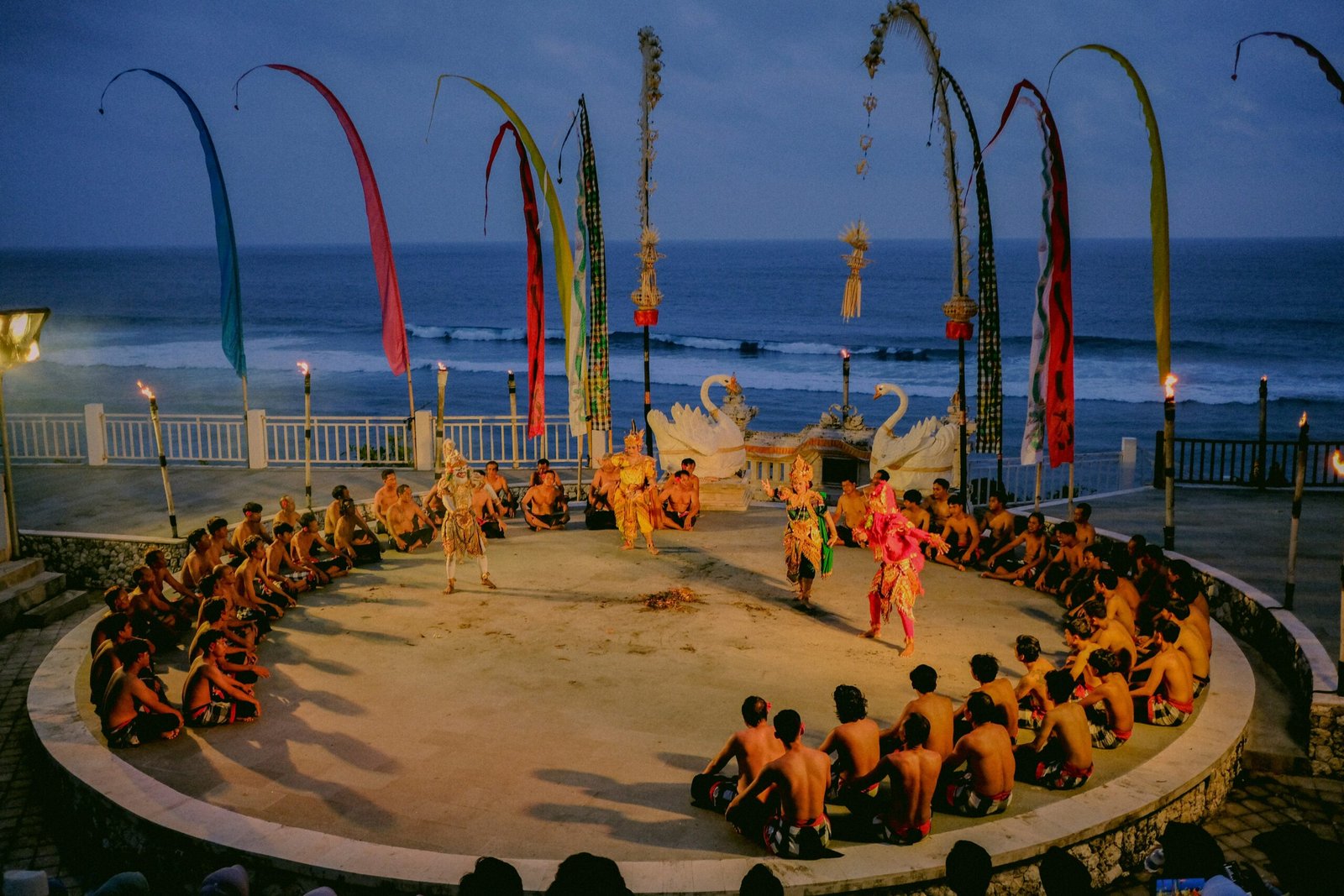
Source : Gede Yoga via unsplash.com
Movement with symbols
Aside from its entertainment value, the Kecak dance has numerous philosophical undertones and symbolism. Respect and petition to the divine are indicated by raised hands. The dancers form a circle, symbolizing the universe’s unity and harmony. Some people think that saying “cak-cak-cak” at the same time generates energy that wards off evil spirits.
Moral Significance of the Ramayana Story
During the Kecak Dance performance, the audience is also encouraged to reflect on the moral concepts inherent in the Ramayana epic. Ravana’s crimes and falsehoods, Sita’s loyalty to Rama, and Hanuman’s courage and sacrifice are still relevant moral lessons today. This narrative highlights the distinctions between good and evil, love, loyalty, and justice.
Spiritual Elements
The spiritual aspect of the Kecak Dance is extremely strong. As a dance derived from the Sanghyang rite, it is thought to have spiritual force that can defend the community from harm. The trance condition experienced by dancers during the original ceremony demonstrates that Kecak Dance is more than just a performance art; it is also a means of communicating with the spiritual world.
Preserving the Kecak Dance in the Present Time
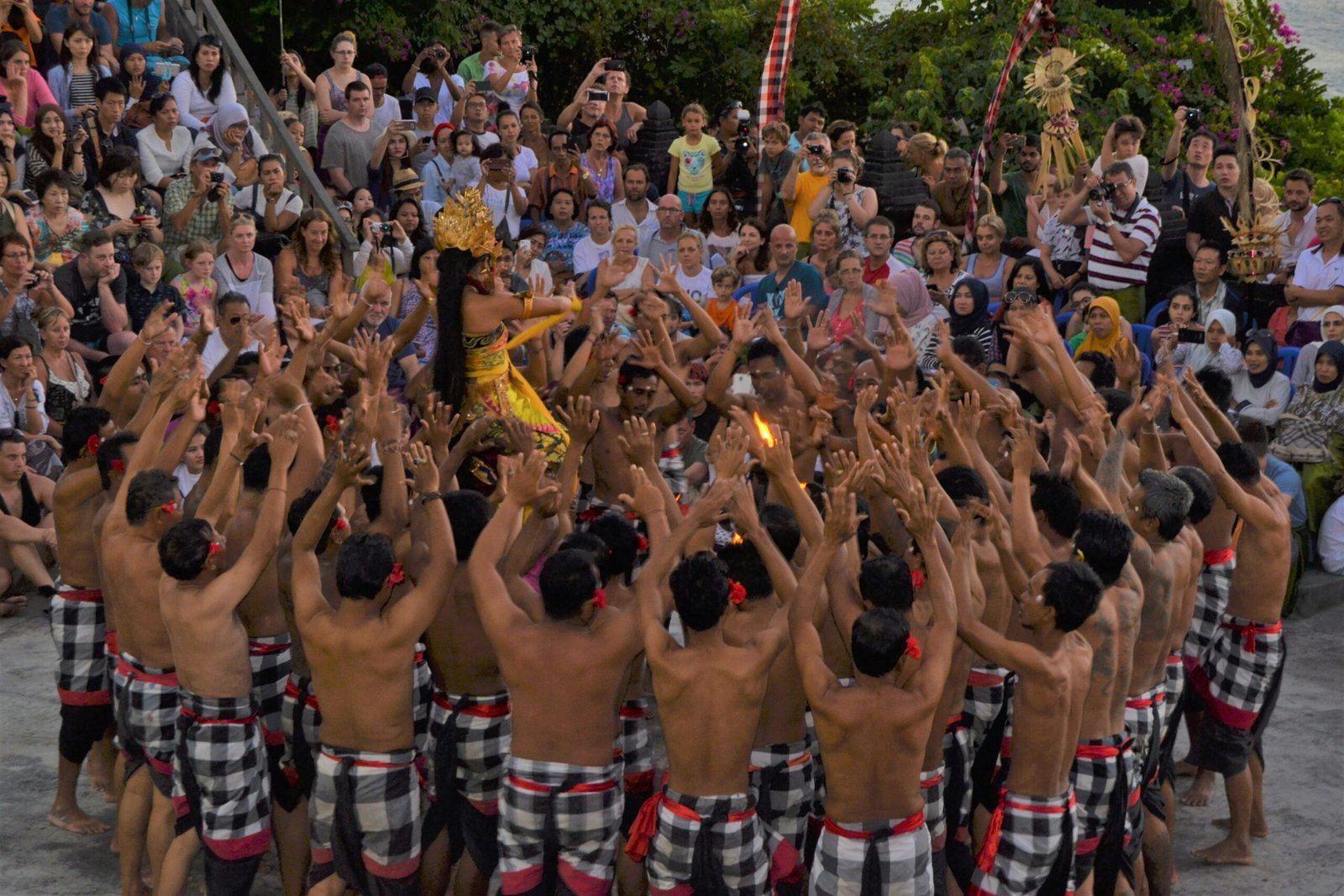
Source : Sifrianus Tokan Low via unsplash.com
Local Community Struggle.
The preservation of the Kecak Dance is primarily reliant on the efforts of the local Balinese community. Many villages in Bali have Kecak dance groups that meet on a regular basis for rehearsal and performances. The necessity of preserving this cultural heritage is taught to the next generation through formal education in schools and community activities.
The Function of Government and Cultural Institutions
The Indonesian government, particularly the Bali Regional Government, and cultural institutions have worked together to preserve the Kecak Dance. Festivals, workshops, and exhibitions are frequently held to promote and introduce Kecak Dance to the general public, both domestically and internationally.
Business and Tourism
Tourism unquestionably contributes to the survival of the Kecak Dance. Thousands of visitors visit major tourist spots like Uluwatu Temple and Tanah Lot each year to enjoy Kecak Dance performances. Tourism has offered considerable resources for cultural preservation, but some are concerned that commercialization would dilute the original meaning of these dances.
Adaptation and Creativity
The Kecak Dance evolves and becomes more innovative with time. Some contemporary choreographers and artists are attempting to create performances that are more accessible to the younger generation by incorporating current aspects into classical traditions. For example, the employment of current light and sound effects, as well as the incorporation of new theatrical aspects, has improved the viewing experience of Kecak Dance.
Aside from its artistic and visual splendor, the Kecak dance has numerous philosophical and spiritual connotations. The Kecak Dance, which originated in religious rituals and has since become a world-renowned spectacle, demonstrates how rich and diverse Balinese culture is. Local communities, governments, and the tourism industry continue to work to preserve these traditions alive and relevant in the current world. As a result, the Kecak Dance represents cultural pride and identity that has been passed down through generations. It is also entertaining.

